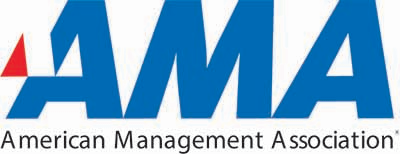ATD Blog
Your Mission-Critical Goal: Develop and Retain a Workforce
Wed Aug 21 2019

There is no doubt that federal agencies are experiencing greater churn in their workforce, which has led to a significant effect on experience, knowledge, and productivity. To reverse this trend and build a more efficient government that’s prepared to meet the needs of the American public, the President’s Management Agenda was created. Its principles state that the organization’s underlying goals are to improve employee engagement and performance management, train employees in new skills, and redeploy human capital resources.
To support President Trump’s March 2017 Executive Order, the Office of Management and Budget (OMB) developed a comprehensive plan to reorganize executive branch departments and agencies to be more accountable and efficient. The main objectives of reorganizing agencies were to:
Deliver programs that citizens most need.
Modernize the federal workforce and prepare it for the future.
Remove barriers hindering employees from delivering results.
The OMB’s focus on streamlining and modernizing the federal workforce drives an enhanced employee experience that ultimately will help agencies achieve mission-critical goals. That said, your agency is responsible for driving employee engagement and developing the skills your employees need, as well as building leaders who can effectively motivate and coach your trained, cutting-edge staff into the future.
“We need to reduce the skills gaps so our workforce is better aligned to the needs of the 21st century,” wrote Margaret M. Weichert, acting director of the Office of Personnel Management and deputy director for management of OMB in November 2018. “But how do we do that? With every modernization action we take, we must be both mission-driven and people-driven; those actions and practices will focus on a common sense of purpose and mission; and will engage employees, stakeholders, and other related parties in that shared purpose and mission.”
As we progress further into the 21st century, employees will need to learn how to use new technologies, and every agency has specific skills in which employees must stay current. But overall, employee training and development research shows that the crucial skills employees need are a combination of technical, financial, and soft skills. These include capabilities in the areas of professional effectiveness, relationship management, analytical intelligence, and business acumen:
Professional effectiveness: how well people manage themselves and their personal productivity. This includes time management, verbal communication, presentation skills, teamwork, and collaboration.
Relationship management: leading and influencing others to achieve common objectives with vision, communication, and interpersonal skills. This includes decision making, conflict management, negotiation, delegation, coaching, and motivating others.
Analytical intelligence: the ability to think in a clear and organized fashion. This includes critical thinking, problem solving, creativity, and innovation.
Business acumen: understanding how business works at functional and strategic levels. This includes customer service, marketing, strategic planning, and financial and legal acumen.
“Just like the private sector, it’s imperative that the federal government can #BeCareerReady,” Weichert added. Like those organizations in the private sector that embrace a learning culture and develop the skills employees need to be successful, government agencies must realize that they must focus on the appropriate development, coaching, and motivation of their employees to achieve their missions.

